#1991 rugby world cup
Video
youtube
Console Sports Games of 1993 - World Class Rugby
Developed by British developer Denton Designs and published by fellow British company Audiogenic Software. World Class Rugby was released in 1991 for the Amiga, Atari ST, Commodore 64, ZX Spectrum and Amstrad CPC to coincide with the Rugby World Cup that took place the same year.
The game was then licenced out to Japanese publishers Imagineer Co and Misawa Entertainment with a port to the SNES being developed and released in 1993, a release in Europe would also happen in 1993.
World Class Rugby's main mode is the world cup mode with a full 16 team competition like the real thing. A league mode is also included as is a friendly mode.
1. Intro 00:00
2. Gameplay 00:15
3. Outro 10:56
Twitter (Gaming & AI Art)
https://twitter.com/zero2zedGaming
Instagram (AI Art)
https://www.instagram.com/random_art_ai/
For more sports game videos check out the playlists below
Console Sports Games of 1993
https://www.youtube.com/playlist?list=PLFJOZYl1h1CEhIf6hohng9T2IPLCpzn7o
#youtube#world class rugby#sport#rugby#1991 rugby world cup#rugby world cup#sports#snes#sports game#90s games#90s gaming#classic games#retro games#imagineer co#misawa entertainment#denton designs#audiogenic software
0 notes
Text
Of the 20 games Australia played on its journey to qualify for this year’s FIFA World Cup in Qatar, 16 games were held abroad. Australia has been a member of the Asian Football Confederation since 2005, and its players’ passports include stamps from Kuwait, Taiwan, Jordan, Vietnam, Japan, United Arab Emirates, Oman, and Saudi Arabia. But several members of the Australian team can claim an even longer journey to the tournament.
“Pressure is me as an 18-month-old baby fleeing a war. Pressure is me as a 6-year-old being in the middle of a war. Pressure isn’t a must-win football game because you can win or lose, but I don’t think anyone’s going to die,” defender Milos Degenek told ESPN before Australia’s Nov. 26 group-stage game against Tunisia.
Degenek was born in Knin, Croatia, in 1994. The city was the self-declared capital of the unrecognized Republic of Serbian Krajina during the 1991 to 1995 conflict that led to the breakup of Yugoslavia and was taken by the Croatian military in 1995. Degenek’s family fled to Belgrade, Serbia, in 1995 to avoid the worst of the war before immigrating to Australia as refugees when he was 7 years old.
“I can remember pretty much everything from that time,” Degenek said in a 2017 interview with FIFA.com. “Not knowing if you are going to wake up tomorrow because of the bombings. You would see a lot of crazy things the next morning when you woke up. A lot of things in flames. And a lot of things that a normal human mind can’t comprehend. You just have to deal with it at a young age.”
Australia’s national soccer team has long revealed the country’s migrant history. Its teams of the 1960s and 1970s featured mostly first-generation migrants from Europe. At the 1974 World Cup in West Germany, Australia’s squad included a roll call of immigrants from England, Scotland, Germany, and then-Yugoslavia—with Australian-born players a minority. Decades later, Australia’s 2006 “golden generation”—who reached the World Cup knockout rounds for the first time ever—included just one player born outside Australia, New Zealand-born Archie Thompson. But the team nevertheless championed its multicultural origins. Soccer was a constant presence in migrant families, and Australian-born children and grandchildren played soccer rather than rugby or Australian rules football. Media coverage at the time celebrated how this particular team reflected Australia’s makeup rather than the cricket or rugby teams.
Australia’s 2022 squad is diverse once again. And if the results of today’s group stage matchups hold, the team may also advance to the knockout rounds. Four players were born in Africa, and three of those were refugees. Forward Awer Mabil was born in 1995 in the United Nations-run Kakuma refugee camp in Kenya after his family fled war in Sudan. Mabil lived at Kakuma until the age of 10, when his family received asylum in Australia. Defender Thomas Deng was similarly born in Kenya in 1997 to parents who had fled Sudan and moved to Australia in 2003.
Garang Kuol is the third Australian player with Sudanese heritage. Kuol was born in Egypt to South Sudanese parents in 2004 before moving to Australia with his family at the age of 6. Twelve years later, during the closing minutes of Australia’s 4-1 loss to France last week, he took the field to become the youngest player to represent the Socceroos at a World Cup. After Australia qualified for the tournament in June 2022, Mabil said the country had given him and his family “a chance of life.” In January, he will join the English Premier League Newcastle United.
“On the journey my mum and her parents went through to reach the camp, many people died,” Mabil told the Guardian in an interview. “They were captured by the rebels trying to leave. The way they escaped, we could talk about it all night. It sounds like something from a movie, but it’s something they actually went through. The war, the journey, what they faced. For me, hearing it, it’s like: ‘Woah.’ What people do to keep their kids safe, what they sacrifice to give them a better life. They didn’t know how long they would be in the refugee camp; they thought they would return home. But there’s no returning home.”
The racial makeup of Australia’s 2022 team reveals an uncomfortable truth about the country’s immigration history. In 1901, the Immigration Restriction Act became one of the first laws of the new Australian federation. Alfred Deakin, then attorney-general and soon-to-be prime minister, said the new law “means the prohibition of all alien colored immigration … the policy of securing a ‘white Australia.’” It was not until 1975 that the Gough Whitlam government formally ended the policy with the introduction of the Racial Discrimination Act. Local Black faces are rarely seen in mainstream media in Australia, and while Australians with Indigenous or Pacific Islander heritage have played prominent roles in the sport, it is only in recent years that African Australians have stepped into the spotlight.
Australia’s more recent policies toward refugees and asylum-seekers have also been mired in controversy. Players like Mabil entered Australia through formal offshore refugee application programs, but informal arrivals to Australia face huge hurdles that have often proved insurmountable. The government began detaining asylum-seekers who arrived on the country’s shores by boat in 1992. The policy was politicized and hardened by then-Prime Minister John Howard, who governed from 1996 to 2007, and had a no-compromise approach to asylum-seekers who arrived in Australia by boat.
In 2001, in the run-up to the federal election, Howard’s government refused to grant permission to the MV Tampa, a Norwegian cargo ship, to enter Australian waters. The Tampa had rescued more than 400 mostly Afghan refugees from a fishing vessel stranded in the Indian Ocean. Australia’s stance sparked a diplomatic incident among Australia, Norway, and Indonesia over which country had responsibility for the initial rescue and subsequent destination of the asylum-seekers. Ultimately, New Zealand accepted many of the refugees with the remainder detained by Australia on the Pacific island of Nauru. In another incident in 2001, top officials in the Howard government claimed refugees had thrown “children overboard” when a Royal Australian Navy ship intercepted another boat carrying asylum-seekers. An Australian Senate inquiry later found the story to be untrue.
“We will decide who comes to this country and the circumstances in which they come,” Howard said in 2001, announcing what would become known as Australia’s Pacific Solution. It included establishing an Australian-run offshore detention center on Nauru, the third-smallest country in the world, and on Papua New Guinea’s Manus Island. The Manus Island facility became infamous for its brutality—in 2014, an asylum-seeker was murdered by facility workers during a riot protesting living conditions, and in 2015, detainees held a hunger strike by sewing their lips together—and was briefly shuttered between 2008 and 2012. In 2021, the Australian government handed control of the Manus Island facility to the government of Papua New Guinea. Nauru’s detention center remains open.
The Pacific Solution has remained popular with the Australian electorate even as asylum-seekers are held indefinitely without charge and criticism that conditions are inhumane remain. Detention centers on Australian soil have also been criticized for being dangerous; asylum claims take an average of 761 days to process, and asylum-seekers are held in what are effectively jails for that time. The new prime minister, Anthony Albanese, has said he’s investigating alternatives.
Australia’s soccer players put a positive face on the refugee experience in Australia, and Mabil acknowledges that his story is alluring to the media.
“I’ve got that title now of ‘oh, refugee kid,’” he told the Guardian. “It’s more for the headlines, for people to try to feel sorry for me, but they never try to understand who I am. … I want to tell that story too, inspire people from my country, my mother’s country, around the world.”
Mabil, Deng, and Kuol are prominent positive examples of African Australian success. Since the mid-1990s, approximately 30,000 people identifying as South Sudanese have immigrated to Australia. The community has produced top athletes in multiple sports, fashion models, musicians, and prominent lawyers. It has also been marginalized, associated with crime and violence in the media, and subjected to racism.
“There were times where I’d play for [Melbourne] Victory [his local team] on the weekend, then I’d be walking through the shops and there will be security guards looking at me strangely or following me around, thinking that I’m going to steal something,” Deng said in an interview with the Australian Broadcasting Corporation. “I’ve had that multiple times in my life, but I’ve just learned to ignore it. … I’ve tried to block it out.”
6 notes
·
View notes
Text
In the 1991 Rugby World Cup one of the grounds used was Otley RUFC in Yorkshire.
Here are 2 pictures from USA v Italy at the ground.
How amazing to see a small ground like this being used for a World Cup game.
#1991RWC #classicrugbyshirts#rugbyunion
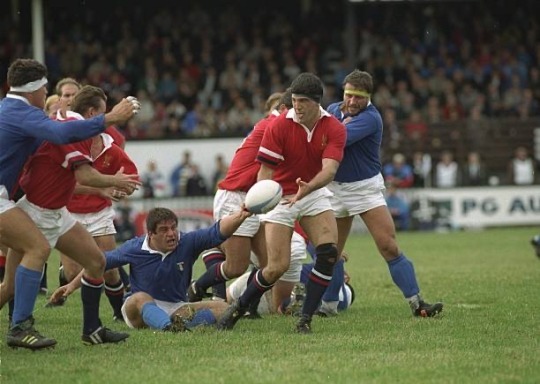

0 notes
Link
RWC 2015: Back to back SA Rugby magazine looks back at the... #funny #memes #sports #live #tweets #win #twitter #tweet #bet #manchester #rugbymen #rugby union #irish rugby #super rugby
0 notes
Text
Paul Rendall: Former England and Wasps prop dies aged 69
Paul Rendall was known throughout rugby as The Judge
Former England prop Paul Rendall has died at the age of 69 after being diagnosed with Motor Neurone Disease last year.
He won 28 caps for his country and played at the 1987 and 1991 Rugby World Cups.
Nicknamed ‘The Judge’, Rendall – who played his club rugby for Wasps – made his Test debut aged 30.
England Rugby tweeted that Rendall was a…

View On WordPress
0 notes
Text
Here are 20 of the biggest upsets in sports history, along with some details on why they were so surprising:
1. Miracle on Ice (1980): The U.S. men's hockey team, made up of amateur and collegiate players, defeated the heavily-favored Soviet team in the semi-finals of the Winter Olympics. The victory was seen as a symbol of American resilience and patriotism during the Cold War.
2. Leicester City's Premier League Championship (2016): Leicester City, a small soccer club with 5,000-to-1 odds of winning the Premier League, shocked the world by taking home the title. Their improbable run captivated fans around the globe.
3. Buster Douglas defeats Mike Tyson (1990): In one of the biggest upsets in boxing history, James "Buster" Douglas knocked out the previously undefeated Mike Tyson in the tenth round of their heavyweight title fight.
4. Appalachian State defeats Michigan (2007): Appalachian State, a small college football program, stunned the Michigan Wolverines in Michigan Stadium. The Mountaineers became the first Division I-AA team to beat a ranked Division I-A team.
5. Rulon Gardner wins gold (2000): Rulon Gardner, an American wrestler, defeated the heavily-favored Russian Alexander Karelin in the Greco-Roman heavyweight final at the Sydney Olympics. Karelin had not lost a match in 13 years and was considered unbeatable.
6. The Miracle Mets (1969): The New York Mets, a newly-formed expansion team, won the World Series in their first playoff appearance. They defeated the heavily-favored Baltimore Orioles in five games.
7. Joe Namath's Guarantee (1969): New York Jets quarterback Joe Namath guaranteed victory over the heavily-favored Baltimore Colts in Super Bowl III. The Jets won 16-7, and Namath's guarantee became legendary.
8. Japan defeats South Africa (2015): In one of the biggest upsets in rugby history, Japan defeated South Africa in the opening round of the 2015 Rugby World Cup. The Brave Blossoms had never won a World Cup match before.
9. The 1985 Villanova Wildcats: Villanova, an eighth-seeded college basketball team, defeated Georgetown in the NCAA championship game. The Wildcats shot an incredible 78.6% from the field in the game.
10. The 1980 Wimbledon Final: Bjorn Borg, who had won the previous four Wimbledon titles, was defeated by unheralded American John McEnroe in an epic five-set match.
11. The 2004 Boston Red Sox: The Red Sox became the first team in baseball history to come back from a 3-0 deficit in a playoff series. They went on to win the World Series, ending an 86-year championship drought.
12. The 1991 Minnesota Twins: The Twins, who finished last in their division the previous year, won the World Series. They defeated the heavily-favored Atlanta Braves in seven games.
13. The 1985 Chicago Bears: The Bears, led by their dominant defense, steamrolled their way to the Super Bowl. They defeated the New England Patriots 46-10, one of the most lopsided Super Bowl victories in history.
14. The 1999 U.S. Women's Soccer Team: The U.S. women's soccer team, led by Mia Hamm and Brandi Chastain, won the World Cup in dramatic fashion. Chastain's game-winning penalty kick and subsequent celebration became iconic moments in sports history.
15. The 1992 Duke Blue Devils: Duke, a team that many experts believed was too small and too young to compete at the highest level, won the NCAA basketball championship. They defeated the heavily-favored Michigan Wolverines in the final.
16. The 1992 U.S. Men's Basketball Team: The "Dream Team," made up of NBA superstars like Michael Jordan and Magic Johnson, dominated the Olympic basketball tournament. They won each game by an average of 44 points.
17. The 2006 Miami Heat: The Heat, led by an aging Shaquille O'Neal and a young Dwyane Wade, defeated the heavily-favored Dallas Mavericks in the NBA Finals. The Heat became the first team in NBA history to come back from a 2-0 deficit to win the championship.
18. The 1950 World Cup: The United States, a team made up mostly of amateurs and semi-professionals, defeated England 1-0 in one of the biggest upsets in soccer history. The game is known as the "Miracle on Grass."
19. The 2001 New England Patriots: The Patriots, led by quarterback Tom Brady, won the Super Bowl as heavy underdogs. They defeated the "Greatest Show on Turf" St. Louis Rams in one of the most thrilling Super Bowl games ever played.
20. The 2011 Dallas Mavericks: The Mavericks, a team that had been labeled as playoff chokers for years, won the NBA championship. They defeated the heavily-favored Miami Heat, led by LeBron James, in six games. Dirk Nowitzki was named Finals MVP.

1 note
·
View note
Text

Resource: Book
Description: World In Their Hands tells the story of the remarkable events that led to a groundbreaking moment in the professionalization of women's rugby: the first Women's Rugby World Cup, which was held in 1991 in Wales, just four years after the first Rugby World Cup for men. This is certainly a story about women's rugby, filled with exciting details from games and league conflicts, but it is also a story about feminism and friendship; many women's rugby players can speak to the difficulty of finding acceptance in the male-dominated sport, and players in the 1991 Women's World Cup faced innumerable additional challenges like misogyny, motherhood, war, recessions, and the collapse of the Soviet Union. World in Their Hands tells these stories too, speaking to the barriers that were broken through this process.
0 notes
Text
Rugby no feminino
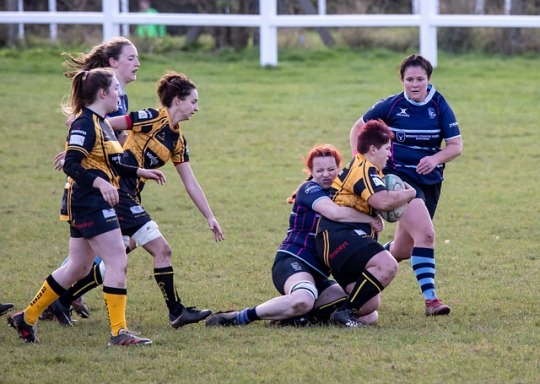
A história do rugby feminino remonta ao final do século XIX, quando equipes femininas começaram a se formar na Inglaterra. No entanto, a prática do desporto por mulheres só foi oficializada na década de 1960, quando a Rugby Football Union (RFU) permitiu a criação de uma liga de rugby feminino na Inglaterra.
Nos anos 1970, o rugby feminino começou a se espalhar pelo mundo, com equipes formadas em países como a Nova Zelândia, Austrália, Canadá e os Estados Unidos. Em 1982, a primeira Copa do Mundo de Rugby Feminino foi realizada na Nova Zelândia, com a vitória da equipa anfitriã.
A partir da década de 1990, o rugby feminino começou a ganhar mais visibilidade e popularidade em todo o mundo. Em 1991, a segunda Copa do Mundo de Rugby Feminino foi realizada no País de Gales, com a vitória da equipa dos Estados Unidos. A partir daí, a Copa do Mundo de Rugby Feminino passou a ser realizada a cada quatro anos, assim como a competição masculina.
Em 2017, a Rugby World Cup foi realizada na Irlanda e teve um recorde de participação de 45 equipes nacionais, com a vitória da equipe da Nova Zelândia. A popularidade do rugby feminino também tem crescido nos Jogos Olímpicos, com a inclusão do rugby de sete feminino como esporte olímpico a partir dos Jogos Olímpicos de 2016 no Rio de Janeiro.
Hoje em dia, o rugby feminino é praticado em mais de 100 países em todo o mundo e a World Rugby, a federação internacional de rugby, trabalha para expandir ainda mais o desporto em todo o mundo. O rugby feminino tem se mostrado um desporto emocionante e competitivo, com jogadoras habilidosas e determinadas que mudam a face do rugby e inspirando jovens meninas a praticar o desporto.

O rugby feminino em Portugal iniciou na década de 1980, com a formação da primeira equipe feminina em Lisboa. Desde então, o desporto cresceu em popularidade em todo o país, com equipes formadas em várias cidades.
Em 1990, a seleção feminina de rugby de Portugal foi criada e começou a competir em jogos amistosos contra outras seleções europeias. A equipa portuguesa conquistou a sua primeira vitória internacional em 2003, quando derrotou a equipa da Bélgica por 19 a 5.
A partir de então, a seleção feminina de rugby de Portugal tem participado regularmente de torneios internacionais, incluindo a Copa do Mundo de Rugby Feminino. Embora a equipa ainda não tenha se classificado para a fase final do torneio, tem conseguido avançar em diversas etapas eliminatórias.
O rugby feminino em Portugal continua a crescer em popularidade, com mais equipes sendo formadas em todo o país e mais jogadoras se envolvendo no desporto. A Federação Portuguesa de Rugby tem trabalhado para desenvolver ainda mais o rugby feminino no país, incluindo a criação de programas de desenvolvimento para jovens jogadoras e a promoção de torneios e competições (inter)nacionais.
Read the full article
0 notes
Text
The Six Nations Rugby in a year of Rugby World Cup
New Post has been published on https://thedailyrugby.com/six-nations-rugby-in-a-year-of-rugby-world-cup/
The Daily Rugby
https://thedailyrugby.com/six-nations-rugby-in-a-year-of-rugby-world-cup/
The Six Nations Rugby in a year of Rugby World Cup
Coming just seven months out from Rugby World Cup 2023, this year’s Six Nations will certainly take on extra significance in terms of squad selection and as a barometer of form, but it doesn’t always follow that way.
In November it is going to be two decades in view that England have become the most effective northern hemisphere team to boost the Webb Ellis Cup, turning into champions of the arena as well as the first-rate outfit in Europe.
To date, it is the only time the Five/Six Nations-Rugby World Cup double has ever been finished, despite England having had four attempts, France two and Scotland, Ireland and Wales one apiece.
Rugby World Cup 2023: This year Six Nations
But with two European teams currently sitting at the top of the World Rugby Men’s Rankings powered by Capgemini in Ireland and France, and a strong set of results in the July internationals and Autumn Nations Series, can the north strike back and add to that 2003 success?
We take a look at how previous Five/Six Nations champions in Rugby World Cup years have fared at the subsequent showpiece tournament.
1987 – France fall just short
Coach Jacques Fouroux led France to their fourth Six Nations Grand Slam.
Les Bleus didn’t usually play to their satisfactory or with the style that Five Nations enthusiasts had turn out to be conversant in, but they have been deserving winners and had the identify within the bag with a spherical to spare.
Reaching the final of the inaugural Rugby World Cup probable matched their expectancies given their form leading into the tournament; however, it proved to be a recreation too a long way and the All Blacks had been crowned international champions after a 29-9 win.
For maximum of the Eighties England were in disarray and 1987 was no exception. A backside-of-the-desk finish inside the Five Nations became then observed via a tame area-very last go out at the palms of Wales.
Wales, like England, best received a single Five Nations healthy that yr but have been the handiest group from the British Isles and Ireland to make a actual impact at RWC 1987, winning the bronze medal. Third location remains their best end to date.
New Year = New #GuinnessSixNations! #Welcome2023 #HappyNewYear pic.twitter.com/lQPBRALtj3
— Guinness Six Nations (@SixNationsRugby) January 1, 2023
1991 – England and another near miss
England waved suitable riddance to the 1980s and had been a side transformed below the brand new axis of Geoff Cooke and Will Carling.
Adopting a electricity-primarily based game with Rob Andrew offering a consistent hand at the tiller at fly-half, England claimed their first Grand Slam since 1980.
With a domestic Rugby World Cup to look ahead to, confidence turned into excessive that they might supply the products on fronts; however, a trade of processes inside the final of Rugby World Cup 1991 proved their undoing and it become Australia who were provided with the Webb Ellis Cup by way of Her Majesty Queen Elizabeth II.
Wales and Ireland had been only spared the ignominy of finishing the Five Nations with out a factor to their call after sharing the points in a dour 21-21 draw in Cardiff.
Deprived of many of their celebrity names following the exodus north to Rugby League, Wales’ struggles inside the Five Nations have been matched at Rugby World Cup 1991 and that they didn’t make the knockout stages. The defeat to debutants Western Samoa ranks as one of the biggest shocks inside the tournament’s history.
Ireland, in the meantime, came inside a whisker of provoking Australia and making the remaining 4 – something that has continuously proved past them ever given that – simplest for Michael Lynagh to interrupt their hearts in a rousing stumble upon at Lansdowne Road.
A middling display inside the Five Nations from Scotland gave no indication that they might reach the semi-finals for the primary and only time at a Rugby World Cup live.
Overall record – Five/Six Nations champions/Rugby World Cup
Winners (England, 2003)
Runners-up (France 1987, England 1991)
Semi-finals (England 1995, France 2007, Wales 2019)
Quarter-finals (Scotland 1999, England 2011, Ireland 2015)
0 notes
Photo






(via World Student Games, Sheffield and World Cup Rugby Championship, London (1991) : Collect GB Stamps)
#World Student Games#World Cup Rugby Championship#Sports stamps#1991 stamps#lcstamps#lcstampswishlist#postage stamps#stamps#royal mail#@RoyalMailStamps
0 notes
Text
Post # 117
The biography of a national anthem
In 1997, the Republic of South Africa adopted a hybrid song of sorts as its national anthem. The song had verses from 5 languages - Xhosa, Zulu, Sesotho, Africaans and English. Therein lies a tale.
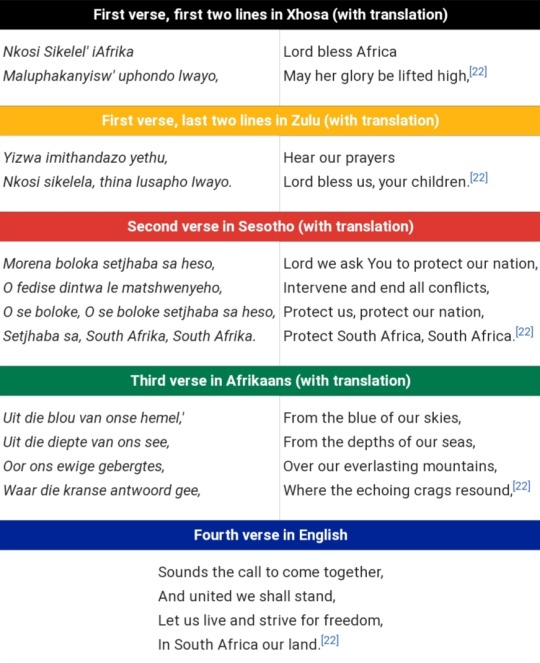
The tale actually begins in 1897, when a teacher in a missionary school near Johannesburg, Enoch Sontonga, composed a hymn (a prayer) in Xhosa, called Nkosi Sikelel' iAfrika - meaning "God bless Africa".
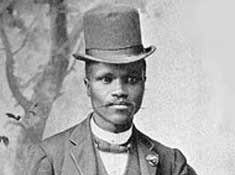
This song - Nkosi Sikelel' iAfrika - originally composed as a school anthem, became popular in many church choirs, until it came to ears of the founder of the Ohlange High School choir, one Mr. John L Dube, who went on to become the founder of the African National Congress.
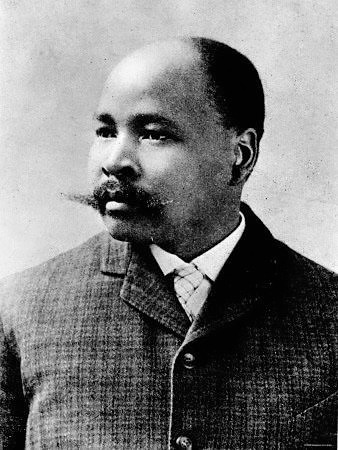
The song was soon adopted as the official anthem for the ANC and became a symbol of the anti-apartheid movement in the country. It was considered by many to be the unofficial national anthem of black South Africa, representing the suffering of the oppressed majority. Because of its connection to the ANC, the song was banned by the ruling government of South Africa.
While all this was happening, in 1918, an Afrikaaner called C.J. Langenhoven wrote a poem in Afrikaans, called Die Stem van Suid-Afrika, literally meaning, The Voice of South Africa or The Call of South Africa.

Die Stem also became immensely popular and was used throughout 1920s by the South African Broadcasting Corporation at the close of daily broadcasts, along with the common anthem sung by all British Commonwealth nations - God Save The King.
In 1938, South Africa proclaimed Die Stem and God Save the King as its co-national anthems. In 1957, God save the King was dropped and Die Stem officially became the only national anthem of the apartheid-promoting, ruling regime of South Africa. Naturally, the blacks in South Africa hated Die Stem.
In 1991, Nelson Mandela was released after 27 years in Polsmoor prison in Robben Island. He came out of jail, freer than the imprisoner. In 1994, elections happen for the first time in a post-apartheid era, where blacks are allowed to vote. ANC wins hands down and Nelson Mandela becomes president of a rainbow nation, where the minority whites, who control the police, the army and the economy, are scared of retribution from blacks. He becomes convinced that "this was no time for petty revenge. Now was the time to build a nation."
So he doused the demands to remove Die Stem as the national anthem and proclaims that both Die Stem and Nkosi Sikelel' iAfrika as the co-national anthems. He uses every available opportunity to unite the nation and make 42 million people march forward as one country.
The book and the movie made on the book - Invictus - shows how Mandela used a sport - Rugby - to unite the nation. In 1995, South Africa's dominantly white Rugby team - Springboks - sings Nkosi Sikelel 'iAfrica on the final match day, wins the match and 42 million South Africans - black, white and any color in between - jump, scream, shout and rejoice on the streets of South Africa as one country.
There is an unbelievable scene from the movie, where an ecstatic Nelson Mandela, while handing over the World Cup to the winning captain of South Africa - Francois Piennar - says, "Thank you for what you have done for the country." An equally emotional Francois Piennar replies, "No, Mr. President. Thank you for what you have done for the country."
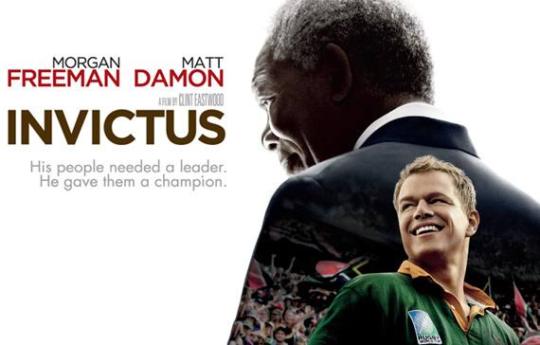
In 1996, a committee representing all segments of the South African population, sat together and employed five of the eleven most widely spoken official South African languages to compose a hybrid national anthem.
Xhosa (first stanza, first two lines)
Zulu (first stanza, last two lines)
Sesotho (second stanza)
Afrikaans (third stanza)
English (final stanza).
The first half was musically arranged by Mzilikazi Khumalo (left in the photo below) and the latter half of the song was arranged by Jeanne Zaidel-Rudolph (right in the photo below), who also wrote the final verse in English.
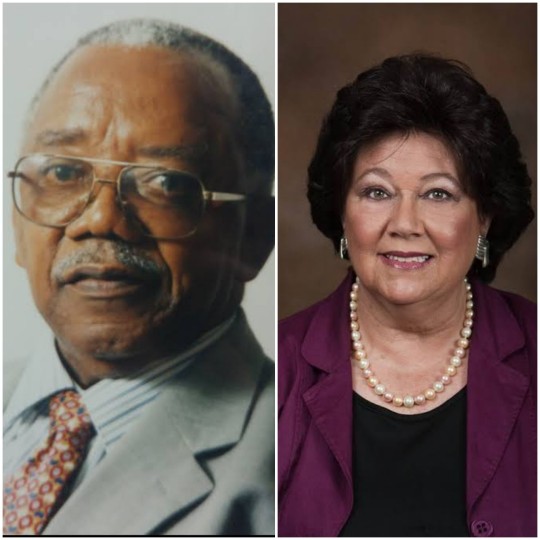
And so it came to pass that, in 1997, the Rainbow Nation, as post-apartheid South Africa was called by Desmond Tutu, adopted a rainbow song as its official nation anthem.
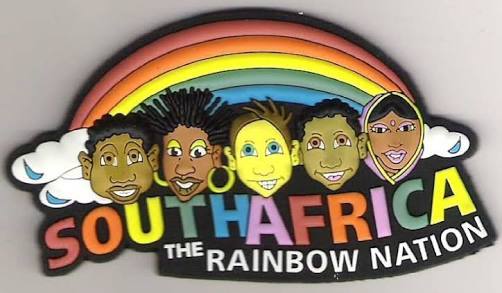
Here it is...
youtube
#national anthem#south africa#rainbow nation#nkosi sikelel iafrika#die stem van suid afrika#the voice of south africa#the call of south africa#c j langenhoven#african national congress#co-national anthems#john l fube#enoch sontonga#god bless africa#god save the king#nelson mandela#robben island#polsmoor prison#springboks#invictus#rugby
12 notes
·
View notes
Photo

Drawn to Death: 6th Volume of Celebrated ‘Golf Mystery’ Series Embraces Art Theft and Death
Following the success of his five previous volumes, sports agent and writer Malcolm Hamer returns with ‘Drawn to Death’, the sixth in his ‘Chris Ludlow’ golf mystery series. Hamer’s latest release sees Ludlow’s own book spark a potentially-deadly backlash from the art fakers it threatens to expose. Coupled with his risky efforts to help a journalist friend write a piece about drug use in golf, Ludlow has plenty of problems to dodge once again.
Since 1991, Malcolm Hamer has firmly cornered the golf mystery market. It’s the perfect outlet for his runaway imagination, and passion for his work as an agent for sportspeople that have included Muhammad Ali and Gareth Edwards.
The series’ sixth volume, ‘Drawn to Death’, embroils readers in yet another chain of sticky situations faced by golfing protagonist, Chris Ludlow.
Synopsis:
Chris Ludlow is troubled by various problems, not least those relating to his girlfriend, Jane, and her unstable ex-husband.
In search of a publisher for the memoirs of Derek Headlam, a renowned and prolific art faker, Chris secures a contract. Within days the publisher is murdered, and Chris and his brother, Max, are warned at the point of a gun to abandon the project. Why?
Are Headlam’s former partners in a scheme to sell his fakes into the art market covering their tracks? One of them is the mysterious ‘D’, ex-British Secret Service, and, like Headlam, a past associate of the traitor, Anthony Blunt.
Meanwhile, Chris is helping his journalist friend, Toby Greenslade, to investigate the use of illegal drugs in golf, and golf pro, Jack Mason to expose an illegal betting scam in the game.
Faced with threats of extreme violence from various quarters, Chris, with the invaluable help of Max, sets about resolving all these problems.
“There is a huge number of golfers around the world, many of whom love fiction” writes the author. “Therefore, the golf mystery market is a lot larger than many would expect, proven by the success of five previous volumes in this series that spans almost three decades. In each book I try to give the reader an original, fast-paced storyline, but with enough detail about the game of golf to interest everyone. All the books in the series are available - and I don’t plan to stop writing.”
Reviews for the previous five volumes have been impressive:
“Unusual, fast-moving, perceptive”. Daily Mail
“Imaginative . . . the plot is water-tight”. Sunday Times
“Goes at a gallop from fairway to green”. Irish Independent
‘Drawn to Death’ is available now: https://amzn.to/2YGz26r
For more information on the entire series, visit the author’s official website:
http://www.golfandsportsthrillers.com
About the Author:
Malcolm's writing career began when he and his wife, Jill Foster, published The Family Welcome Guide - about family-friendly hotels, pubs and restaurants in the UK. It went into 23 editions during the '80s and '90s.
The first Chris Ludlow golf mystery, 'Sudden Death', was published in 1991 and was followed by four more Chris Ludlow stories, as well as a blockbuster, 'Predator', about a ruthless agent at large in the world of international sport. His other books include a history of the Ryder Cup and a guide to European golf courses.
'Patriotic Games', was published in 2013 and was initially inspired by a photograph of the Corinthians team which toured Canada and the USA in 1906. His speculation about how many of that team might have perished in WW1 provided the impetus for the novel.
Malcolm has been an agent for sportsmen since the early '70s. His clients, past and present, include squash player Jonah Barrington, Muhammad Ali, golfer Johnny Miller, football stars Denis Law and Trevor Brooking, top rugby players such as Gareth Edwards and Phil Bennett, and many other sporting heroes.
5 notes
·
View notes
Photo

Out and Proud – And Competing At The Highest Level
When the former Saracens F.C. player came out in a 2015 interview, he became the first active English rugby union player to come out publicly, joining a vanishingly small group of out male professional athletes in the U.K.
The 27-year-old, who comes from one of rugby’s most famous families, also revealed he was in a relationship with a man 34 years his senior.
The response?
“Horrible, really,” said Stanley. “One was the whole ‘gold digger’ thing and people just jumped on that bandwagon.”
He and his partner Laurence Hicks tried not to take too much notice.
“For us, it’s great to represent relationships like ours. And from my perspective, I hope that it has shown the positivity of being a gay sportsman and showing gay youngsters that they can still achieve their dreams in sport.”
Coming from rugby “royalty” it was almost inevitable that Stanley would become a professional player. The game was in his blood. His brother Michael plays for the Samoan national team and he has three cousins who have all played rugby union at a professional level. His uncle, Joe Stanley, was part of the New Zealand All Blacks team that won the 1987 World Cup.

“From there, my dad was always going to follow in his [brother’s] footsteps and ended up getting his children into rugby,” Stanley says. “I guess it made my dad and his brothers realize that it was possible to make it to that level.”
His Kiwi father and English mother relocated from New Zealand to the U.K., where Stanley was born in 1991. By the age of four, he was already a regular at the local rugby club, but as he began to fall in love with the game, he realized he was different to his siblings and friends. He was gay.
“I was hoping it was just a phase,” he says. “Obviously when you’re growing up people use the word gay in a derogatory manner. It was difficult to come to terms with it and try and be a rugby player, thinking that both didn’t suit each other and that I couldn’t do both - I had to be one or the other.”
Read the rest of the interview here.
#sam stanley#rugby#saracens#uk#pride#pride month#proudoutloud#queer voices#lgbtpride#lgbtq community
121 notes
·
View notes
Text






Princess Anne singing ‘Flower of Scotland’ at the Rugby World Cup Semi Final between Scotland and England on 26 October 1991
her smirk in the last gif gives me life
#proud patron#even though they lost#you can also see peter and a bit of zara at the back in the first two gifs#princess anne#princess royal#british royal family#brf#throwback#rugby world cup
51 notes
·
View notes
Text
Women’s Rugby Japan vs Canada World Cup game is scheduled for Sunday, October 9, 2022.
New Post has been published on https://thedailyrugby.com/womens-rugby-japan-vs-canada-world-cup/
The Daily Rugby
https://thedailyrugby.com/womens-rugby-japan-vs-canada-world-cup/
Women’s Rugby Japan vs Canada World Cup game is scheduled for Sunday, October 9, 2022.
The Japan and Canada Women’s Rugby teams will go head to head on the 9th of October, 2022. You must be wondering how to watch Women’s Rugby World Cup: Japan vs Canada outside UK. ITV is geo-restricted outside the UK due to content licensing rights. However, the daily rugby can give you access.
Rugby Canada Announce 32 Player Squad for Women’s Rugby World Cup in New Zealand – First Match October 9th vs Japan
Coach Kevin Rouet has named his 32 player roster going to NZ for the World Cup. One of the most notable omissions is Pam Buisa, a player who was making headlines during the UK tour of November 2021 under coach Sandro Fiorino. She came off the disappointing Olympic 7s performance that summer but shone as an impact player in the XVs tour that fall.
Women’s Rugby Japan vs Canada World Cup
This will be the fifth time Japan have participated in the women’s Rugby World Cup, but they have not enjoyed much success at the tournament.
They have won only one pool game, beating Sweden 10-5 in 1994. Can they make it two against Canada in Whangarei this Sunday?
Canada have featured at every women’s Rugby World Cup and will become the first nation to play 40 matches in tournament history this weekend. Sunday’s pool opener against Japan is also Canada’s 150th women’s Test match.
Three players – second-row Tyson Beukeboom, flanker Karen Paquin and full-back Elissa Alarie – are playing in their third World Cup, having been part of the Canada squad that made the 2014 final as well as playing at RWC 2017.
That earned her a starting flanker role in the June 2022 tour to NZ where she started at both blindside and openside over the three games against USA, Australia and NZ. She had a quiet tournament and in the July home tests against Italy and Wales, coach Rouet went with Fabiola Forteza, Karen Paquin, Courtney Holtkamp, Sara Svoboda, Gabrielle Senft in the flanker roles. He must have liked what he saw as all those players made the cut, Buisa is on the non-travelling reserves.
In his selection comments he did mention the selection process took into account “team players and a good group to be together for 2 months, it was a balance in the decision for sure”.
On which date Japan Women vs Canada Women going to play?
The Japan Women vs Canada Women match date is on the 9th of October 2022. The 1991 Women’s Rugby World Cup marked Japan’s entry into the global stage. Japan has since participated in three other World Cups – in 1994, 2002, and 2017. The Japan Women claimed the Asia Rugby Women’s Championship in 2015, 2016, and 2017.
The Canada women’s national rugby union team is represented by Rugby Canada and plays in red and black. Currently classified as the third-best team in the world, they were ranked fifth in World Rugby’s first women’s rankings. Canada participates in events like the Rugby World Cup and the Pacific Four Series.
Canada Women’s Rugby World Cup Squad 2022
Elissa Alarie; Maddy Grant, Sara Kaljuvee, Alex Tessier, Paige Farries; Taylor Perry, Brianna Miller; Brittany Kassil, Emily Tuttosi, DaLeaka Menin, Courtney Holtkamp, Tyson Beukeboom, Fabiola Forteza, Karen Paquin, Sophie de Goede (captain).
Replacements: Gilian Boag, Mikiela Nelson, Alexandria Ellis, Ngalula Fuamba, Emma Taylor, Gabrielle Senft, Justine Pelletier, Julia Schell.
Canada Women’s Rugby World Cup Fixtures 2022
(All kick-off times are UK & Ireland time)
Pool B
Sun 9 Oct, Japan v Canada (3.15am, Northland Events Centre, Whangarei)
Sun 16 Oct, Italy v Canada (12.45am, Waitakere Stadium, Auckland)
Sun 23 Oct, Canada v USA (3.15am, Waitakere Stadium, Auckland)
Japan Women’s Rugby World Cup Squad 2022
Rinka Matsuda; Hinano Nagura, Mana Furuta, Shione Nakayama, Komachi Imakugi; Ayasa Otsuka, Megumi Abe; Saki Minami (captain), Nijiho Nagata, Sachiko Kato, Yuna Sato, Maki Takano, Seina Saito, Iroha Nagata, Ayano Nagai.
Replacements: Hinata Komaki, Misaki Suzuki, Makoto Lavemai, Kie Tamai, Otoka Yoshimura, Moe Tsukui, Minori Yamamoto, Kyoko Hosokawa.
Japan Women’s Rugby World Cup Fixtures 2022
(All kick-off times are UK & Ireland time)
Pool B
Sun 9 Oct, Japan v Canada (3.15am, Northland Events Centre, Whangarei)
Sat 15 Oct, USA v Japan (5.30am, Northland Events Centre, Whangarei)
Sun 23 Oct, Japan v Italy (0.45am, Waitakere Stadium, Auckland)
0 notes